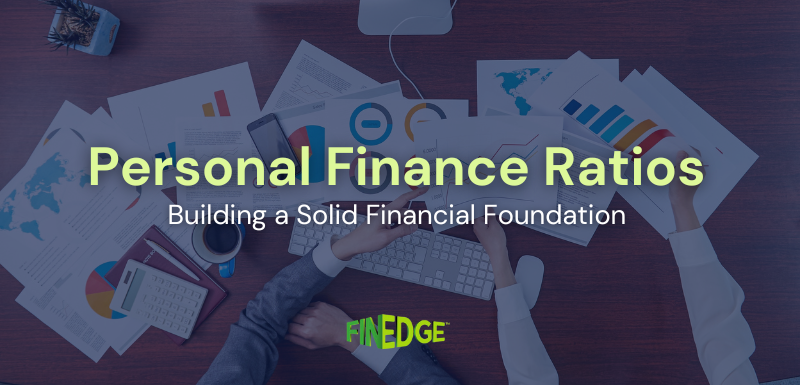Planning Your Child’s Education Abroad: A Financial Roadmap
- Understand the cost of studying abroad vs India
- Learn how inflation impacts education planning
- Discover how to plan with SIPs in mutual funds
- See how expert guidance makes all the difference
- Explore how FinEdge’s DiA platform brings structure to your child’s education goals
Sending your child abroad for higher education? Here’s a step-by-step plan to help you turn aspiration into action.
Why Studying Abroad Is a Big Dream and a Bigger Responsibility
For many Indian families, sending a child to study abroad is not just a goal, it’s an emotional milestone. It represents exposure, opportunity, and pride. It often becomes one of the most meaningful financial commitments a parent will ever make.
But this dream also comes with weighty decisions: Which country? What course? What will it cost? And, most importantly, how will you fund it without derailing your own long-term security?
This is why early and strategic financial planning is not optional, it's non-negotiable. Starting late or relying solely on last-minute education loans can lead to stress, compromises, or even missed opportunities.
India vs Abroad: A Reality Check on Education Costs
The financial difference between studying in India and abroad is significant and often underestimated. Here’s a broad comparison to guide your expectations:
|
Country |
Avg. Undergrad Cost |
Avg. Post-Grad Cost |
|
India (Public) |
Low |
Moderate |
|
India (Private) |
Moderate |
Moderate-High |
|
USA |
High (₹X L+) |
Very High (₹Y L+) |
|
UK |
High |
High |
|
Canada |
Moderate-High |
High |
|
Australia |
Moderate-High |
High |
|
Europe (Public) |
Low to Moderate |
Moderate |
|
Singapore |
High |
High |
But tuition is only one part of the total cost. You also need to budget for:
-
Airfare and travel (round-trips and emergency visits)
-
Accommodation (on-campus vs off-campus)
-
Meals and daily expenses
-
Health insurance and medical contingencies
-
Visa fees, exams, and application costs
-
Currency fluctuations that can significantly inflate actual spending
Did you know? While general inflation hovers around 5–6%, the inflation in education costs has reached 11–12% annually.
This means: A program that costs ₹50 lakhs today could cost ₹1.4 crore in just 10 years.
This is where long-term planning and inflation-beating investments play a critical role.
How to Plan for Your Child’s Overseas Education
Planning for international education involves much more than just setting aside money. It requires a structured roadmap:
Step 1: Estimate the Total Cost
Start with:
-
Whether you’re planning for undergraduate or post-graduate studies
-
Which country/countries are under consideration
-
Expected course duration (1-year vs 2-year)
Then, build a detailed cost estimate including:
-
Tuition and academic fees
-
Living expenses (accommodation, utilities, food, internet)
-
Travel and visa processing
-
Study material, laptop, local commuting
-
Health insurance, contingencies
-
A 10–15% contingency buffer
This final number (adjusted for inflation) becomes your target investment goal.
Step 2: Factor in Inflation and Time Horizon
You need to understand how fast education costs rise. If your child is 8–10 years away from higher education, your cost estimates must account for this:
Example:
-
Present cost: ₹50 lakhs
-
Inflation: 11% annually
-
In 10 years: ₹1.42 crores
Use future value calculators or consult an advisor to calculate this adjusted goal amount.
Step 3: Invest with Purpose Using Mutual Funds
To build this large corpus, Systematic Investment Plans (SIPs) in mutual funds offer:
-
Inflation-beating returns (especially equity mutual funds)
-
Customizability to adjust portfolio mix over time
-
Affordability; start small and scale up
-
Discipline through monthly auto-debits
Example Goal: ₹1.2 Cr in 15 years
Assumed return: 13% p.a.
SIP needed: ~₹25,000/month
In early years (10–15 years away), consider equity-heavy portfolios (large cap, flexi-cap, ELSS). As the goal approaches, gradually shift to hybrid and then short-term debt funds for capital protection.
Step 4: Why an Expert Makes All the Difference
Many parents begin investing without a real plan. That’s where expert guidance adds tremendous value:
-
Helps define a clear, achievable goal (₹1.4 Cr in 10 years, for example)
-
Helps create a roadmap using goal-specific funds
-
Adjusts equity-debt allocation based on risk appetite and time horizon
-
Conducts annual reviews and course corrections
-
Prevents common mistakes like emotional exits or random investments
Instead of reacting to market noise, a financial expert keeps your child’s goal on track.
Don’t Just Save. Plan Strategically.
Starting a SIP is not the same as having a strategy.
You need:
-
A defined target amount (not just 'save what we can')
-
A timeline that drives fund selection
-
Regular check-ins to review inflation, goal status, and fund performance
Too many families underestimate costs and end up depending heavily on last-minute loans. With structured planning, that stress can be avoided.
How FinEdge’s DiA Platform Supports This Journey
The Dreams into Action (DiA) platform by FinEdge transforms a vague aspiration into a well-monitored financial journey.
With DiA, you can:
-
Define and track goals like "Child's PG in UK in 2035"
-
Align SIPs to specific timelines, not generic targets
-
Receive periodic nudges, rebalancing advice, and behavioral insights
-
Feel confident that every rupee you invest has a clear purpose
Whether you’re starting 12 years early or 5 years before your child leaves, DiA helps you stay in control.
Final Thought: Don’t Delay the Dream
The cost of waiting is far greater than the cost of starting. Even if your budget is modest now, starting early reduces the load later.
Dream big. But back it with action.
Start today. Set the goal, plan the journey, and secure your child’s future abroad.
FAQs
Your Investing Experts
Continue Reading
Understanding the Financial Planning Pyramid: Building Your Finances the Right Way
Most people juggle several financial goals at once, an emergency fund, retirement planning, a child’s education, or even short-term lifestyle goals like travel. Without a proper framework, it becomes difficult to decide what to tackle first. The Financial Planning Pyramid offers a simple and effective way to bring structure to your financial life. It ensures that essential protections are in place before you start saving and investing for long-term wealth.
Personal Finance Ratios You Should Understand Before You Start Investing
Successful investing begins long before you pick funds or set return expectations. It starts with understanding your financial foundation, how much you earn, how much you spend, and how much is left to invest consistently. These simple but powerful personal finance ratios offer a clear view of your financial health and help you make informed, goal-aligned decisions.
Why Mutual Funds Are the Smartest Way to Build Your Child’s Marriage Fund
Indian weddings are beautiful but expensive affairs, and their costs are rising every year. Mutual fund SIPs can help you plan ahead, ensuring your child’s big day is celebrated without financial stress.



.png)